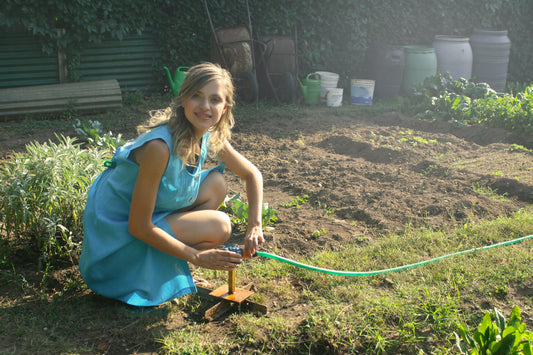Austin, Texas, a city celebrated for its vibrant culture and rapid growth, sits at the crossroads of unique geological and ecological zones, resulting in a rich diversity of soil types. These soils shape agriculture, urban development, and environmental conservation efforts. This 2025 guide, informed by recent research, explores Austin’s soil types, their characteristics, uses, and management practices to support sustainable land use and preserve the city’s natural heritage.
Why Soil Matters in Austin
Soils are the foundation of Austin’s ecosystems, supporting agriculture, biodiversity, and infrastructure. A 2024 USDA Natural Resources Conservation Service (NRCS) soil survey identified over 40 distinct soil series in Travis County, each influencing land use decisions (NRCS, 2024). Understanding these soils is critical for farmers, developers, and conservationists aiming for sustainable growth in 2025.
Austin’s Soil Regions
Austin lies at the intersection of three ecological regions, each contributing distinct soil profiles:
- Blackland Prairie: Known for clay-rich, fertile soils ideal for agriculture and grazing.
- Edwards Plateau: Features rocky, shallow soils supporting ranching and diverse wildlife habitats.
- Post Oak Savannah: Contains sandy, loamy soils in eastern Austin, fostering mixed vegetation and farming.
Primary Soil Types in Austin
Austin’s soils vary in texture, drainage, and fertility, shaping their applications. Below are the key soil types:
1. Vertisols: Clay-Rich Blackland Prairie Soils
- Characteristics: High clay content, dark color, high shrink-swell capacity (expands when wet, shrinks when dry), rich in organic matter.
- Locations: Blackland Prairie, eastern and central Austin.
- Uses: Fertile for crops like cotton, corn, wheat, and sorghum.
- Challenges: Shrink-swell behavior can damage buildings and roads. A 2024 study recommends deep foundation systems for structures on Vertisols (Journal of Geotechnical Engineering, 2024).
2. Mollisols: Fertile Grassland Soils
- Characteristics: Dark, organic-rich topsoil, high fertility, well-suited for grasslands.
- Locations: Blackland Prairie and transitional zones.
- Uses: Supports corn, soybeans, and grazing lands.
- Challenges: Prone to erosion on slopes, requiring conservation practices like cover cropping (NRCS, 2024).
3. Alfisols: Moderately Fertile Soils
- Characteristics: Well-drained, clay-rich subsoil, moderate fertility.
- Locations: Eastern Austin, Post Oak Savannah transition areas.
- Uses: Suitable for oats, wheat, native grasses, and livestock grazing.
- Challenges: Compaction risk requires organic amendments and reduced tillage.
4. Inceptisols: Young, Shallow Soils
- Characteristics: Shallow, weakly developed, mixed sand, silt, and clay.
- Locations: Edwards Plateau, hilly and urbanized areas.
- Uses: Grazing, native vegetation, limited agriculture.
- Challenges: Erosion and low water retention limit intensive use (NRCS, 2024).
5. Entisols: Alluvial Soils of River Valleys
- Characteristics: Young, sandy or loamy, lack distinct layers.
- Locations: Floodplains along the Colorado River and tributaries.
- Uses: Vegetables, fruits, with proper water management.
- Challenges: Flood risk and nutrient leaching require careful irrigation.
Urban Soils in Austin
Rapid urbanization has altered Austin’s soil profiles. Urban soils, often mixed with construction fill, are compacted and low in organic matter, posing challenges for landscaping.
- Characteristics: Compacted, reduced fertility, variable composition.
- Challenges: Increased runoff, poor plant growth. A 2024 study found urban soils in Austin reduce infiltration by 30% (Environmental Management, 2024).
- Management: Aeration, compost amendments, and raised beds improve conditions.
Soil Management Practices
Effective management enhances soil productivity and sustainability. Tailored strategies for Austin’s soils include:
- Vertisols: Add compost to improve structure, use cover crops to control erosion, implement contour plowing to manage water.
- Mollisols: Test soils regularly, rotate crops with legumes, adopt no-till farming to reduce erosion.
- Alfisols: Prevent compaction with reduced tillage, add mulch, plant cover crops to boost organic matter.
- Inceptisols: Mulch to retain moisture, plant native grasses on slopes, control grazing to prevent overuse.
- Entisols: Use drip irrigation, add organic matter, plant flood-tolerant crops to manage flood risks.
Soil Conservation Practices
Austin employs conservation strategies to protect soil health, as highlighted in recent research:
- Contour Farming and Terracing: Reduces erosion on Mollisols and Alfisols by following land contours (NRCS, 2024).
- Cover Crops and Crop Rotation: Improves soil structure, prevents erosion, and enhances fertility.
- Reduced Tillage: Preserves soil structure and moisture, promoting nutrient cycling.
Soil Testing and Amendments
Regular soil testing is essential for informed management. A 2024 UC ANR study emphasizes testing for pH, nutrients, and organic matter to optimize soil health (UC ANR, 2024).
- pH Adjustment: Add lime for acidic soils or sulfur for alkaline soils based on test results.
- Fertilization: Use soil test data to apply balanced fertilizers, especially for Mollisols and Vertisols.
- Organic Amendments: Compost and mulch enhance fertility and moisture retention across soil types.
Soil testing kits are available at retailers like:
- The Natural Gardener (8648 Old Bee Caves Rd, Austin, TX 78735): Organic gardening supplies and testing kits. Rated 4.8 stars on Google Maps.
- Home Depot Garden Center (3600 S IH 35 Frontage Rd, Austin, TX 78704): Affordable soil testing kits. Rated 4.3 stars.
Ecological and Environmental Impact
Austin’s soils play a vital role in ecological health:
- Biodiversity: Diverse soils support native plants and wildlife, enhancing ecosystems.
- Water Filtration: Healthy soils filter rainwater, reducing waterway pollution.
- Carbon Sequestration: Soils store carbon, mitigating climate change (Environmental Management, 2024).
Future Soil Management in Austin
As Austin grows, sustainable soil management is critical. Key initiatives include:
- Green Infrastructure: Rain gardens and permeable pavements improve soil health and manage runoff.
- Community Engagement: Programs like Austin’s community gardens promote soil conservation education.
- Regenerative Agriculture: Practices like agroforestry and holistic grazing enhance soil resilience (UC ANR, 2024).
Conclusion: Sustaining Austin’s Soil Diversity in 2025
Austin’s soils, from fertile Mollisols to rocky Inceptisols, reflect the city’s geological and ecological richness. By understanding and managing these soils, residents can support agriculture, enhance urban landscapes, and preserve biodiversity. Recent 2024 research from NRCS, UC ANR, and environmental journals underscores the importance of tailored management and conservation. Start your soil journey today—test your soil, adopt sustainable practices, and contribute to Austin’s vibrant, thriving future.












